Daegu Concert House (Formerly Daegu Citizens' Hall) (대구콘서트하우스 (구.대구시민회관))
1.1Km 2022-10-26
141, Taepyeong-ro, Jung-gu, Daegu
+82-53-250-1400
Daegu Concert House, previously Daegu Citizen’s Hall, had undergone renovations from April 2011 to August 2013 to reconstruct eaves and columns of the large concert halls and to build a performance support hall perfect for international concerts. The hall is equipped with sound facilities matching international standards. Grand Hall has 1,284 seats, Chamber Hall (small concert hall) has 248 seats, and the parking lot can accommodate a total of 387 cars throughout 215 spaces in the basement level parking lot and 72 spaces in the parking tower. In addition, the concert hall houses an exhibition hall, practice room, and community facilities. In particular, the Grand Hall offers vivid, visible, and acoustic effect by shortening the distance between the performers and audience so that it fits the international standard for concert halls with the best sound facilities.
Gyeongsanggamnyeong Park (경상감영공원)
1.1Km 2018-08-07
99, Gyeongsanggamyeong-gil, Jung-gu, Daegu
+82-53-254-9404
Located in central Daegu, Gyeongsanggamyeong Park was built during the 34th year of King Seonjo of the Joseon Dynasty (1601) and was the original location of Gyeongsanggamyeong (1910), the office of the Gyeongsangbuk-do governor. In 1965 the provincial office was moved to another location and the park opened its doors to the public under the name of Central Park. The park was renamed again in 1997 and has been known as Gyeongsanggamyeong Park ever since.
Many cultural and historical heritages are located in the park including the Seonhwa-dang building where the governor worked (Daegu Tangible Cultural Property No.1); the Jungcheong-gak building that was one of the governor’s residences (Daegu Tangible Cultural Property No.2); and Seonjeong-bi gravestone where governor’s achievements are engraved. Seonhwa-dang building in particular has historical significance since it is one of the few remaining government buildings.
The park is well loved by citizens for its green forest, beautiful flowers, well-developed grass plaza, scenic fountain area, and its comfortable walking paths.
Daegu Modern History Streets (Tour of Modern Streets) (대구 근대골목(근대로의 여행))
1.1Km 2023-10-27
66, Gukchaebosang-ro 102-gil, Jung-gu, Daegu
+82-53-661-3327
Daegu Modern History Streets is an experiential tour that brings the participants across Daegu’s alleyways and living history. During the Korean War, Daegu was much less damaged than other regions. Because of that, the city retains the changes in lifestyles before and after the war relatively well.
There are 13 courses in total, run by regional self-governance groups in Daegu, defined according to different themes and areas. The most popular among them is Course 2, the Modern Cultural Street, which takes visitors on a tour of major sites associated with Daegu’s modernity. Follow the retro aesthetics and the history of Daegu and Korea along places like Kyesan Catholic Church, Jeil Church, old houses, and the former Chinese Elementary School.
Note that multilingual tours are offered to international visitors in English, Japanese, and Chinese, in regular tours (14:00 every Saturday) and on-demand tours (available for groups of more than 5). Reservations are offered on the official website.
Starbucks Daegu Jongro Old House (스타벅스 대구종로고택)
1.2Km 2024-12-27
22 Jungang-daero 77-gil, Jung-gu, Daegu
Special Starbucks store where the past and present meet in harmony
.Starbucks Daegu Jongro Old House store conserved the beautiful architectural style of a hanok house built in 1919 and reinterpreted with the modern touch. The store is composed of two hanok buildings and a garden. There is a separate building for restrooms. Here, you can enjoy the scenery of the four seasons and the history from past to present. The store also offers high-quality audio sound in collaboration with Bang & Olufsen, who was inspired by Daegu, the origin of Korea’s modern music cafe and the city of culture and art. The store sits in the middle of the Jingolmok Alley, the second course of the Modern Cultural Alley Tour, and has become a tourists’ beloved destination and landmark in Daegu. This special store serves as a guide that indirectly delivers a historical meaning.
Bongsan Cultural Center (봉산문화회관)
1.2Km 2022-12-26
77, Bongsanmunhwa-gil, Jung-gu, Daegu
+82-53-661-3500
Bongsan Cultural Center is a comprehensive culture and arts complex located on Bongsan Culture Street in downtown Daegu. The center serves to provide cultural entertainment to the community as well as contribute to the development of traditional culture and local art. The center also provides opportunities for the public to participate in well-being recreational activities and acquire life-long education related to culture and arts.
The center has five modern exhibition halls (Exhibition Hall
No. 1-4 and Art Space) and two performance halls (Gaon Hall with 442 seats and Space Raon with 90 seats). As the center is located near Banwoldang Station (Daegu Subway Line 1), it is easily accessible by public transportation.
Daegu Korean Chinese Association (대구화교협회)
1.2Km 2023-02-03
34, Jong-ro, Jung-gu, Daegu
+82-53-661-2624
Daegu Korean Chinese Association building is a red brick two-story Western-style house built in 1929. Seo Byeong-guk, a rich man in Daegu, entrusted the design and construction to Mo Mungeum, a Chinese architect. It is a flat rectangular structure, and the protruding granite porch balances left and right symmetry. There is a theory that the bricks were brought from Pyeongyang and the woods from Geumgangsan Mountain. It was also used as an HID (Headquarters of Intelligence Detachment) building. There is one building, a playground, a statue of Chiang Kai-shek, and a mural of a Chinese figure painted at the entrance. It is a representative modern building in the Daegu area that boasts a beautiful appearance and is currently used as the office of the Daegu Korean Chinese Association. It was designated as a National Registered Cultural Heritage on June 19, 2006, as it shows the style of modern architecture in the 1930s, not many examples of which are left. This is the last stop of Daegu Modern Alley Tour Course 2.
Olive Young - Daegu Daehyeon Branch [Tax Refund Shop] (올리브영 대구대현)
1.2Km 2024-04-18
Store #106, #107, Gangnam Medical Tower, 111, Sinam-ro, Buk-gu, Daegu
-
Daegu Yangnyeongsi Herbal Medicine Festival (대구약령시한방문화축제)
1.2Km 2025-07-11
Namseong-ro, Jung-gu, Daegu
+82-53-254-1658
Daegu Yangnyeongsi Herbal Medicine Festival, held in the 366-year-old Daegu Yangnyeongsi, offers a rich experience of traditional herbal medicine culture. Visitors can enjoy free consultations with herbal medicine doctors, herbal foot baths, and unique programs such as Joseon Gutpan: Herbal Club and Zombie Street.
Daegu Medicinal Herb Wholesale Market (대구 한약재 도매시장)
1.2Km 2021-06-01
51-1, Namseong-ro, Jung-gu, Daegu
+82-53-257-0545
Daegu Medicinal Herb Wholesale Market, also known as Daegu Yangnyeongsi, is a major herbal medicine market specializing in the practices of Oriental medicine. The market dates all the way back to the Joseon dynasty, when the governor of Gyeongsang-do at that time supplied the best medicinal herbs to the central administrative office and sold the rest to the commoners. Among the many cities that served as suppliers of herbal medicine, Daegu survived as the longest and remained the most active. Until 1910, Daegu was at the center of the herbal medicine world, providing Oriental medicine to travelers from all around the world including Japan, China, Russia, Manchuria and many other countries. Even to this day, Daegu Yangnyeongsi continues to supply herbal medicine across the country and preserve the traditional medicine culture that has been passed down for over 350 years.
Bongsan Culture Street (봉산문화거리)
1.2Km 2025-01-09
38, Bongsanmunhwa-gil, Jung-gu, Daegu
+82-53-425-6845
Bongsan Culture Street is a landmark culture & arts place in Daegu. The street, which stretches all the way from Daegu Hakwon to Bongsan Yukgeori (six-way intersection), has over 20 galleries of various sizes.
It was 1991 when the small alley with several art galleries started to turn into a breeding ground for culture and the arts. Soon after, the street was officially designated ‘Bongsan Culture Street’ and subsequently, the roads were neatly paved, artistic street lamps were installed, and streetside gardens were created. With the opening of Bongsan Culture Center and Cultural House for Teens, the street became increasingly frequently by citizens, not just professional artists.
At Bongsan Culture Street, artwork os on display throughout the year and every October (when the Bongsan Art Festival is held) the whole street is filled with artistic passion.
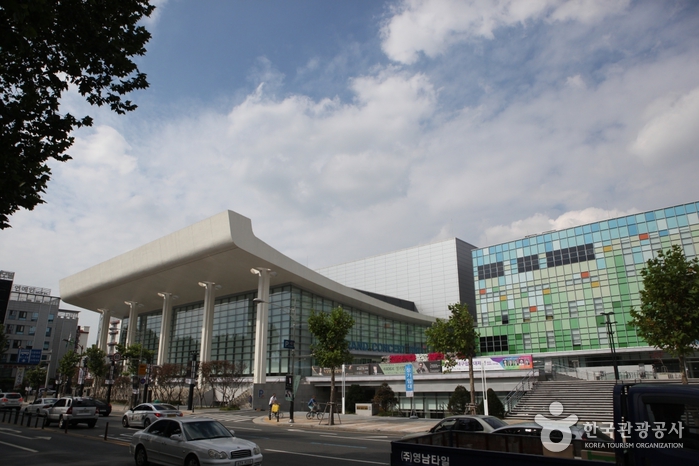
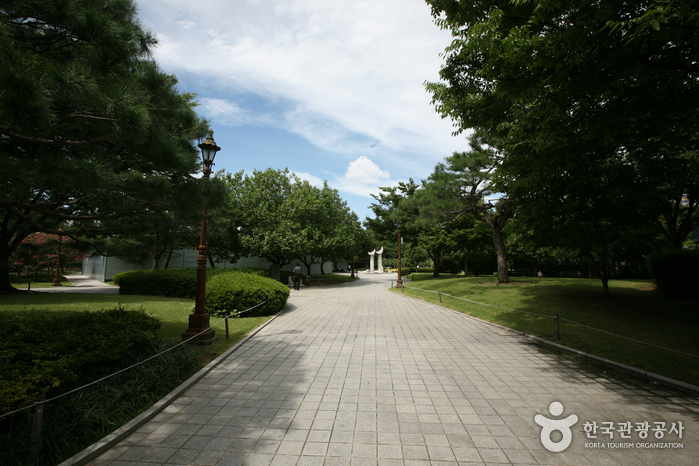
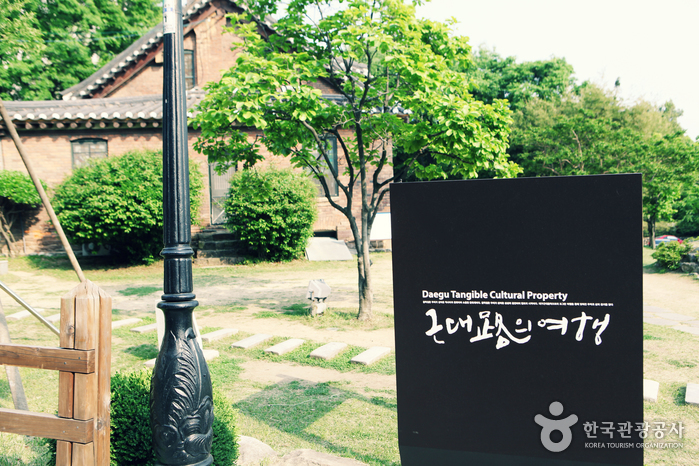

![Olive Young - Daegu Daehyeon Branch [Tax Refund Shop] (올리브영 대구대현)](http://tong.visitkorea.or.kr/cms/resource/87/2888487_image2_1.jpg)
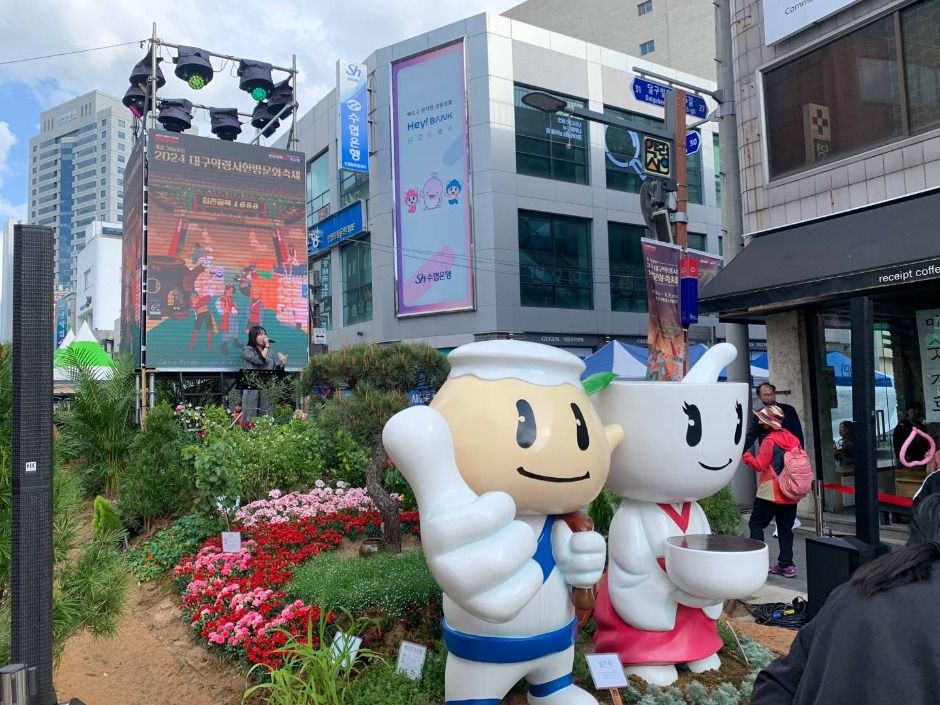
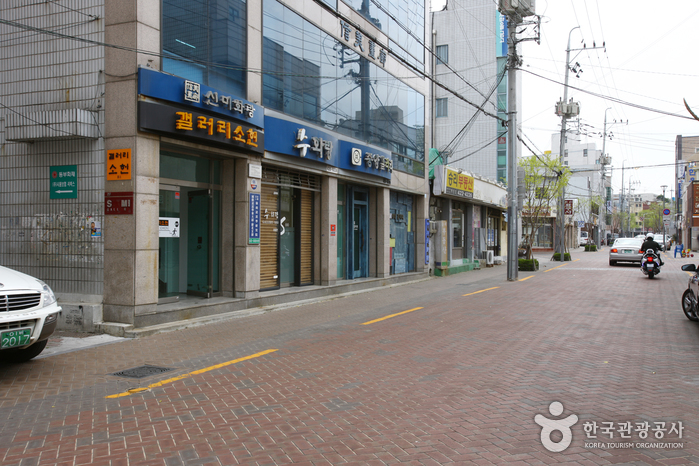
 English
English
 한국어
한국어 日本語
日本語 中文(简体)
中文(简体) Deutsch
Deutsch Français
Français Español
Español Русский
Русский